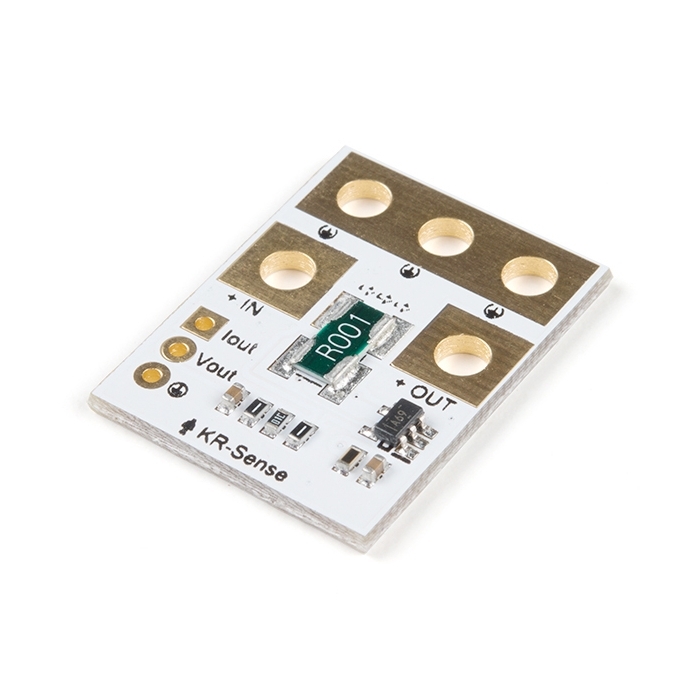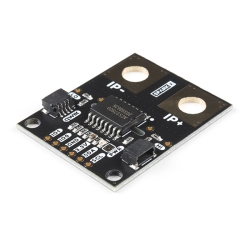KR Sense Current and Voltage Sensor - 45A
The KR Sense 45A is a small voltage and current sense breakout board.
Product Overview
The KR Sense 45A is a small voltage and current sense breakout board. DC current is determined by measuring a voltage drop across a parallel shunt resistor, then converted to a final analog voltage output by the INA-169. Voltage sense is accomplished by scaling to 3.3V ADC range by a precision resistor divider. This version of the sensor features a maximum voltage tolerance of 51.8V at 44.7A, to be exact.
Please be aware that KR Sense boards are supplied without leads or connectors. The pad sizes are large enough to accommodate 12 gauge heavy duty leads but care must be exercised when soldering. Smaller gauge leads are considerably easier to solder without creating shorts.
This product is compatible with the Attopilot 45A Voltage and Current Sensor Breakout.
Features & Specs
- Input resistor divider scaled for 13.6V Input voltage (recommended) for 3.3V output
- 51.8V Max
- 44.7A Max
- Very low zero current offset
- Analog current output scaled for 3.3V ADC
- Self Powered
Customer Reviews

Stock and Customer Discounts
Available Discounts
- $21.38 | 25+ units
- $20.25 | 100+ units








